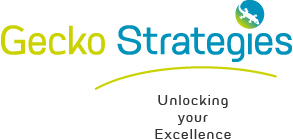
In the Western world we will ever get back to a situation where stability and visibility would rule
Leadership in the New Normal
Economy experts agree that the current downturn is fundamentally different from recessions of recent decades, and to emphasise the fact that we will not get back to "normal", they have named the restructuring of the economic order "the new normal". It is unlikely, experts say, that in the Western world we will ever get back to a situation where stability and visibility would rule.
The characteristics of the new normal are :
-
A climate where change has become the only constant, requiring leaders to reinvent themselves on a daily basis and adapt to a changing environment ;
-
Little visibility, requiring shorter time spans for planning, and responsiveness and faster decision-making.
Leaders in the new normal are expected to reflect a reassuring and centered image, in order to keep employees’ engagement. Meanwhile, employees fear for their job and are likely to be in a "survival mode", where protection is the main objective.
Leading in the New Normal requires a specific set of skills, most of which aren’t taught in business schools.
In this workshop you will learn to develop and maximise the following behaviours and strategies:
-
Adaptation and flexibility
-
Resiliency, both moral and physical
-
Creativity
-
Emotional and situational intelligence
-
Confidence and optimism
-
Authenticity and congruence
"The New Normal requires a specific mindset which mixes imagination (Why not?), energy (Why not NOW?) and commitment (Why not ME?)"Prof. Stéphane Garelli, IMD Lausanne
By acquiring these strategies, leaders will be able to thrive in challenging environments :
-
Ability to manage one’s own energy and that of others : find out in what conditions the individuals’ and teams’ energy is highest;
-
Be the stable and reassuring pilot that the team needs in rough weather;
-
Ability to welcome and embrace difficult emotional states and welcome the expression of these emotions;
-
Build a strong identity for the team and develop its curiosity and interest in what happens in the outside world to stimulate innovation;
-
Ability to express gratitude for the teams’ performance;
-
Define a vision, or a "dream", which stimulates the individuals’ natural drive to perform;
-
Give meaning to managers and employees so that they become and remain motivated : co-construct rather than micro-manage;
-
Develop the resources necessary to use intuition and develop a capacity to accept situations as they are, identify opportunities and draw the best from them.






